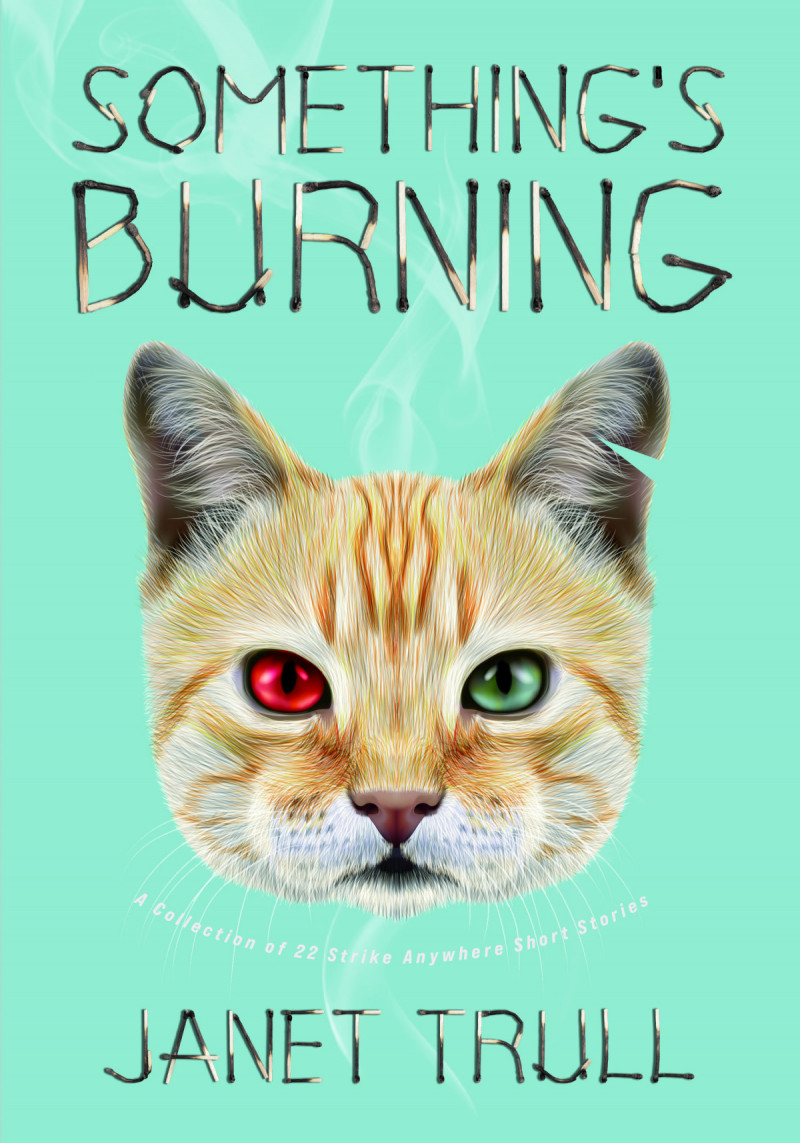



Click here to see the video announcement for ‘Something’s Burning.’

Please click here to see ‘Something’s Burning’ listed as an anticipated read by CBCBook’s in the fall of 2022!
Ian Rogers of Shrapnel analyzes and praises Trull’s use of trauma sources to charge character epiphanies in her text—click here to read!

All About Canadian Books with Crystal Fletcher - interview with author Janet Trull by
The Front Matter podcast featuring Janet Trull and Ian Elliot. Listen to Episode 4 here.
1. What’s with the cover? Is the cat on fire?
Charlie is a mean old tomcat who has a tough job; guarding the gates of Hell. No cats were harmed during the illustration of the cover. I promise.
2. Something’s Burning is a collection of 22 short stories. Talk about the short story genre.
I really connected with Alice Munro’s stories; honest depictions about rural and small town peo-ple. When she won the Nobel Prize for Literature, she elevated the short story genre. Before that, the novel was king. Short stories often have a novel’s worth of narrative in them. Today’s readers appreciate the efficiency.
3. You describe the book as “small town stories with universal themes”…. Can you expand on that?
Villages have been around for 11000 years, according to anthropologists. The protectionism of those ancient villages meant that foreigners were under suspicion. That hasn’t changed. Iden-tity politics, culture wars and world anger have all breached the ramparts of the small town. Tension between belonging and betrayal is increasing, and tolerance for “others” is at an all time low.
4. Can you describe your writing process?
Writing is a way for me to release the ideas that get crowded in my head. I usually do a lot of subconscious problem solving in my sleep, so I write early in the morning to dump
my thoughts out onto the page. The characters in my short stories do the hard work of trying to make sense of the world. If they come across as offensive, don’t
blame the author. It’s fiction.
5. Can you talk about the headings for each section of the book?
Part 1: Tinder
When you start a fire, you need tinder. And when you start a story, you need an idea. One of the stories, Swimming Free, started with a memory my husband and his brothers have about swim-ming at the YMCA as a kid in London, Ontario. Boys swam nude. No bathing suits were allowed in the outdoor pool. Research about that led me to the story of Slippery the Sea Lion who escaped from Storybook Park in London. Those two stories came together and made good tinder.
Part 2: Spark
Many of my friends and family members will recognize stories from this section. The sparks are of-ten stories that have been told and retold and it might take a long time before something catches on fire. Sometimes it takes quite a few tries with the lighter or the match before a spark actually catches. The Nook is a story based on the family cottage. Cottagers will recognize the genera-tional tension connected to the little bit of real estate where all the family memories are stored.
Part 3: Inferno
The fever pitch of the fire. This is the section where the themes of belonging and betrayal flare up and turn mean. Angry. Dangerous. Like The Hitchhiker, about a boy who accepts a ride on a lonely country road.
Part 4: Coals
This section has some difficult stories about characters caught in a tsunami of social
change.
6. Any new projects coming up?
Blue Denim Press in Cobourg, Ontario, is publishing my historical novel about Haliburton, the town where I live. 1878 was a year much like 2023. People around the globe were fleeing persecution, fam-ine and environmental disaster. Lured by free land grants, immigrants rode the train to the end of the Victoria Rail Line where they discovered a harsh Precambrian landscape. Nothing in life is free.